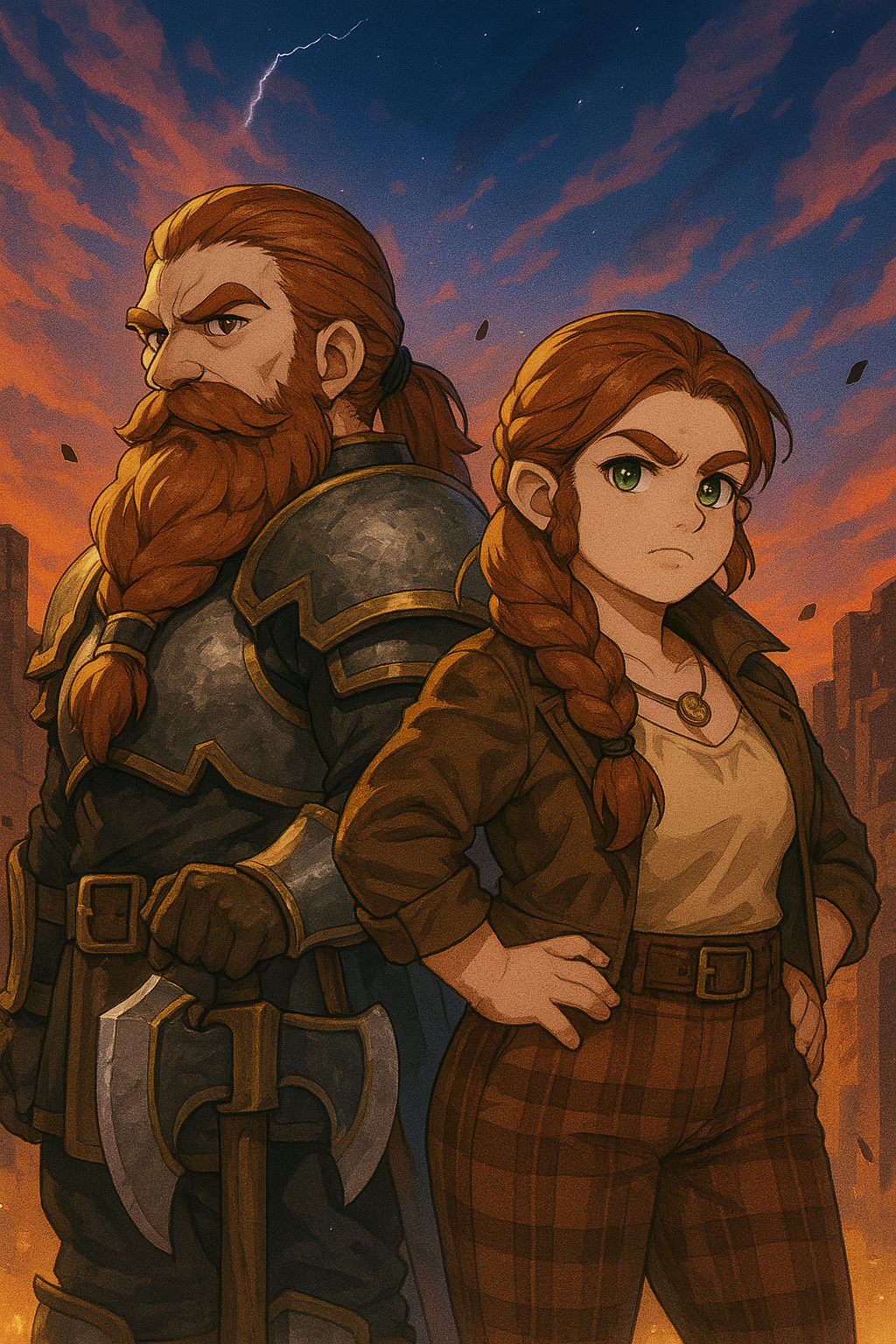Dwarf
"There is nothing more dependable than a dwarf with a plan. Unless, of course, it’s a dwarf with a grudge.”
Dwarves are not the bedrock of the Pattern.
They are the reason the Pattern has a foundation at all.
They do not arrive in Realms with fanfare. They arrive with tools. They do not seek permission—they seek blueprints. And if those are unavailable, they draft new ones on the back of someone else's prophecy.
Where humans are narrative sparks, dwarves are counterweight.
They bring ballast to stories that drift, stability to arcs that sag, and structural critique to metaphysical frameworks that never asked to be reviewed in the first place.
They do not resist change. They simply refuse to be shaped by anything they haven't personally hammered into form.
They are not elegant. They are exact.
Resonance Profile
Dwarven Threads are deep, dense, and unreasonably patient.
They do not fracture easily. They do not drift. They reinforce everything around them—physically, emotionally, narratively. Their presence is often what allows a Realm to remain coherent after someone else detonates the main plot.
They are not quick to react.
But once they move, they move with purpose—and the weight of ancestral expectation behind them.
Their resonance tends to suppress arc instability. Their memories linger longer than the stories they inhabit. If you forget a dwarf’s involvement in your tale, don’t worry—they’ll remind you. In writing.
Cultural Variants (Narrative Only)
Dwarves do not fracture. They accumulate—each lineage a layer of stone, compacted by history and held together with well-documented contempt for shortcuts.
Threadwalkers may recognise the following cultural echoes:
- The Deep Keepers, who build strongholds older than most religions.
- The Forgeborn, who treat fire as both tool and teacher.
- The Stone-Wanderers, who carry blueprints in their souls and fortresses in their pockets.
- The Meadborn, who drink loudly, fight artfully, and remember everything—especially the parts you hoped they’d forget.
- The Doomkeepers, who catalogue ruins, recite losses, and do not consider this grim—merely responsible.
- The Overlords, who weaponise efficiency and would like to remind you that conquest is just project management at scale.
These are not mechanical subraces.
They are narrative load-bearing metaphors.
Use them for texture. Or ammunition.
Roleplaying a Dwarf
Dwarves are not loud by default.
But when they speak, it’s usually because something has collapsed—or is about to.
They value permanence. They distrust improvisation. They are suspicious of joy that doesn’t come in pint form or require scaffolding. To play a dwarf is to enter the narrative with intent—and a set of backup plans labelled alphabetically.
You might:
- Refuse to run unless the building is literally on fire—and only if it's your building.
- Carry more tools than weapons, and use them with equal precision.
- Interrupt a heartfelt speech to correct someone's description of granite.
- Brew your own ale, judge everyone else’s, and bring enough to share—grudgingly.
- Hold a grudge so thoroughly it becomes a family heirloom.
- Complain about elves. Loudly. While defending them to anyone else.
Dwarves are not here to sparkle.
They are here to ensure the stage doesn’t collapse beneath the sparkle.
Dwarf Ancestry
Your ancestry grants the following traits.
Creature Type: Humanoid
Size: Medium (typically between 4 and 5 feet tall, but dense in the way that makes architects weep with respect)
Speed: 30 feet
Darkvision.
You can see in dim light within 120 feet as if it were bright light, and in darkness as if it were dim light. You see shades of grey, architectural flaws, and whether the walls were properly aligned.
Dwarven Resilience.
You have resistance to Poison damage, and advantage on saving throws to avoid or end the Poisoned condition. It’s not that you’re immune. You’re just extremely unimpressed.
Dwarven Toughness.
Your hit point maximum increases by 1 at 1st level, and increases by 1 again every time you gain a level. You don’t bounce back—you just never fell properly in the first place.
Stonecunning.
While touching stone, you can use a bonus action to gain Tremorsense (60 feet) for 10 minutes.
You may do this a number of times equal to your proficiency bonus per long rest.
Walls talk to you. Floors complain. Foundations sigh with relief.
Language.
You do not track languages. ThreadSpeak ensures you are understood. Your accent will still imply you think everyone else is doing it wrong.
Origin Feat.
Choose one Origin Feat of your choice. Popular selections include Tough, Crafter, or Magic Initiate (Artificer), but you may take any feat for which you qualify. A dwarf will make anything work, eventually—usually with diagrams.
“Your continued reading is more valuable than coin. However, the author assures me that Ko-Fi support assists in ‘keeping the kettle on.’ I am told this is a metaphor. I remain unconvinced.” — Seraphis Nightvale Ko-Fi: #madmooncrow





Comments